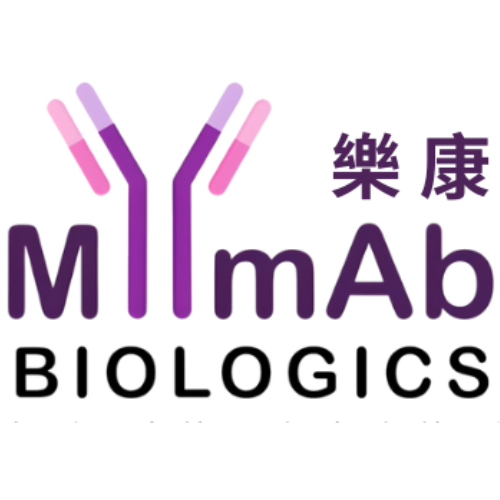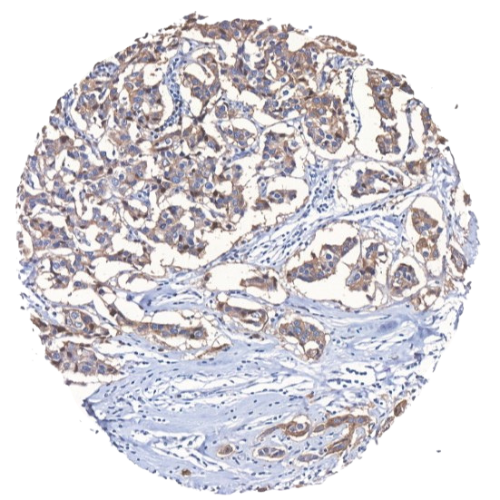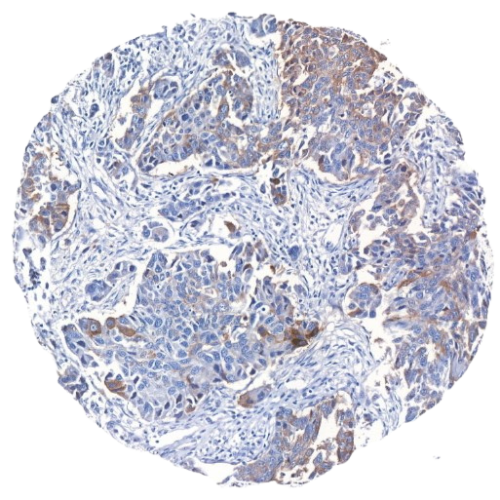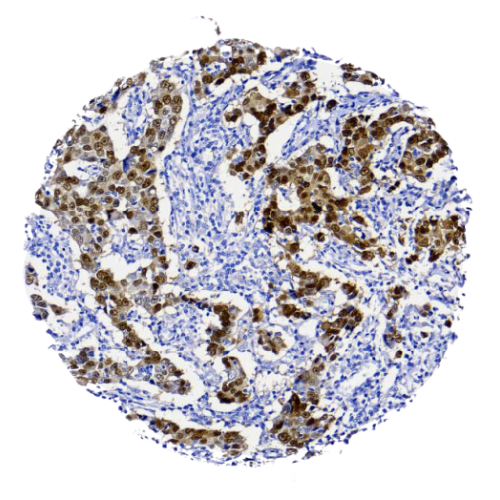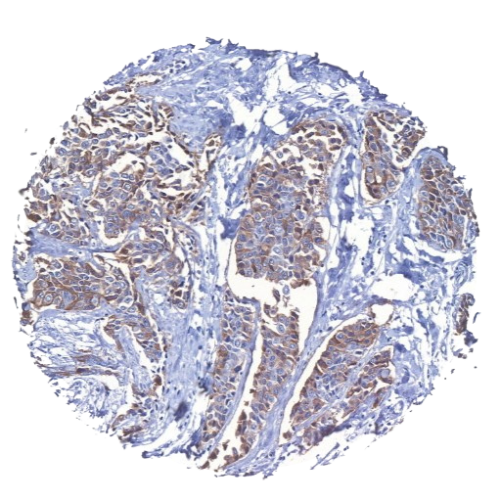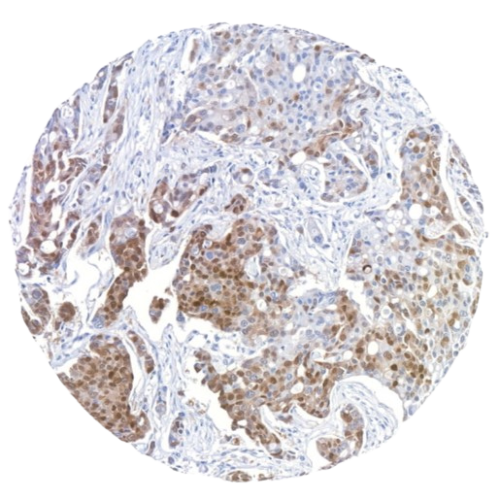Breast Tumour Tissue Microarray for Cancer Research
Tissue microarrays (TMAs) are high-throughput platforms that enable researchers to analyze hundreds of tissue samples simultaneously under identical experimental conditions. By embedding multiple cores from different patients into a single paraffin block, TMAs streamline the comparison of tumour biology across various subtypes, stages, and patient profiles. A breast tumour tissue microarray is particularly valuable in cancer research, as it allows for the study of hormone receptor status, HER2 expression, tumour heterogeneity, and the development of subtype-specific therapies such as those for triple-negative or luminal breast cancers.
Breast tumour TMAs are most commonly used in immunohistochemistry (IHC) and hematoxylin and eosin (H&E) staining. IHC helps detect specific protein markers like ER, PR, HER2, and Ki-67, which are critical in determining prognosis and guiding treatment decisions. H&E staining, on the other hand, provides essential structural context by highlighting tissue architecture, cell morphology, and tumour grading. Together, these staining techniques make breast tumour TMAs a fundamental tool in translational and clinical oncology research.
Role of Tissue Microarrays in TME Research
Tissue microarrays have transformed how researchers explore the tumour microenvironment (TME). They enable high-throughput analysis of multiple tissue samples simultaneously, making them essential for identifying biomarkers, conducting immune profiling, and performing spatial analysis. TMAs allow researchers to map immune cell infiltration, tumour heterogeneity, and stromal interactions across a broad cohort. Because human-derived TMAs preserve spatial organization, they provide a more accurate representation of the TME compared to animal models. This accelerates the validation of predictive biomarkers and improves the understanding of therapy response, ultimately pushing forward the development of personalised cancer treatment strategies.
Why Choose MYmAb Biologics' Tissue Microarray Over Others
What sets MYmAb Biologics apart is more than just technical quality. It’s the depth and relevance of our source material:
- IRB-Approved: All tissue samples are ethically sourced under approved Institutional Review Board protocols.
- SEA Sourced Sample: Our tissue microarrays are sourced from Southeast Asian samples, offering distinct population-specific insights that are often missing from Western-focused arrays.
- Fully Consented: Every sample comes from donors who have given informed consent, supporting ethical research standards.
- Comprehensive Data: Each array is curated for metadata richness, covering tumour type, grade, stage, and patient demographics when available.
- Global Delivery: We deliver worldwide with reliable logistics and clear documentation, making our TMAs accessible to researchers everywhere.
We also offer services such as:
Staining Services
High quality H&E and IHC staining services with fast turnaround time and competitive pricing.
IHC Staining Training
Comprehensive 2-day staining training workshop with certification of completion.
Scanning & Storage Services
Scanning service that allows researchers to view slides on the monitor and storing of virtual slides.
Contact Our Team
Location:
Block D-G-8, UPM-MTDC Technology Centre III, Universiti Putra Malaysia, 43400 Serdang, Selangor Darul Ehsan, Malaysia.
Phone:
03-8938 9819
Email:
info.mymab@gmail.com
